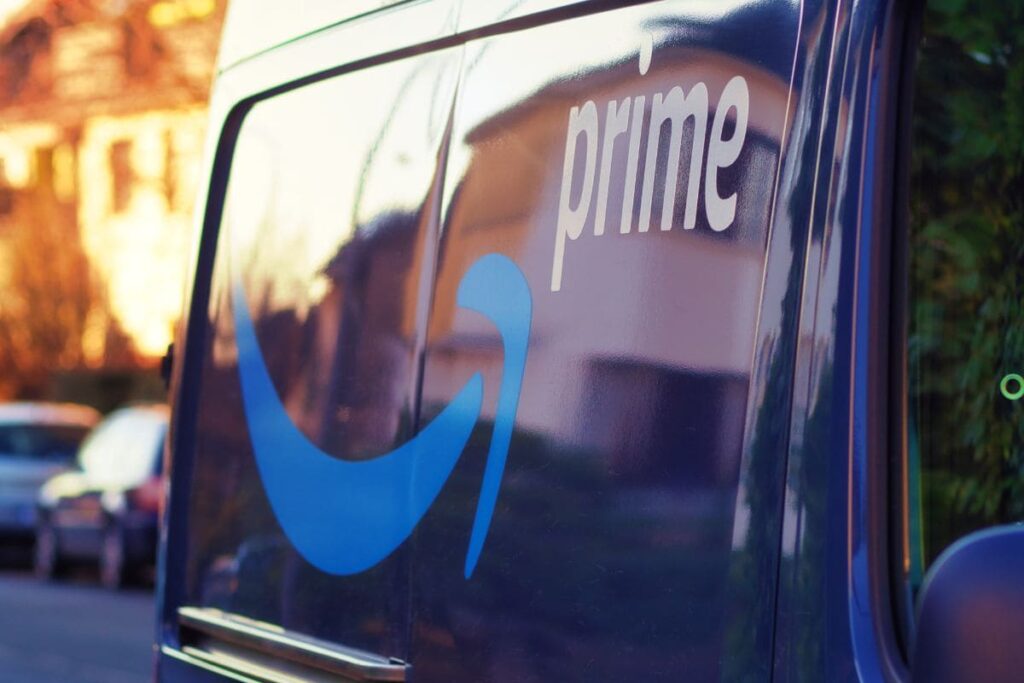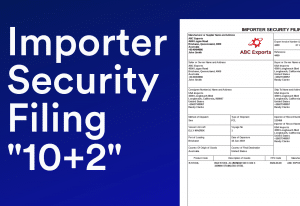If you’re considering selling products through Amazon FBA (Fulfillment by Amazon), understanding how to handle FBA shipping is an essential step. This process streamlines storage, packaging, and shipping for Amazon sellers, with the added benefit of Amazon’s reliable customer service and Prime shipping.
Navigating Amazon’s shipping requirements is key to your success. It’s important to select the right products, ensure they’re packed properly, and choose the most suitable shipping method. Each of these decisions plays a role in your overall success on the platform.
This guide provides insights into Amazon FBA shipping, from preparing and sending your products to minimizing costs and avoiding common pitfalls. Whether you’re just getting started or looking to refine your current approach, this guide is designed to help.
If you’re still searching for products to sell, check out our Master Sourcing at the Canton Fair Course here.
Steps to Preparing Your Products for FBA
Selecting Suitable Products for FBA
Check if FBA is cost-effective for your items using the Amazon FBA Revenue Calculator. This tool helps you understand fees by considering the size and weight of products. Choose items with lower volumetric weight to cut down on shipping fees. For instance, small electronics, books, and cosmetics do well on FBA. They’re compact and in high demand.
Think about how fast your products sell. Choose those that move quickly to avoid long-term storage fees. Steer clear of items that don’t handle temperature well like chocolates or some beauty products. Instead, opt for durable items like kitchen gadgets or sports equipment that do not spoil or break easy reducing your risk.
Implementing Effective SKU Management
Create a smart SKU (stock keeping unit) system for your products. It should reflect key product details like price, supplier, size, and color. Start each SKU with a supplier code. Then add attributes like color and size. End with the price or unique identifier.
This setup helps you track inventory with precision. You can see which items are selling and which aren’t. It’s vital for making quick stocking decisions, especially when sales spike.
Organize your SKUs this way to streamline assessments and reorder efficiently. This method saves time and reduces errors during busy periods.
Enhancing Inventory Forecasting
Use Amazon’s inventory reports and your sales data to predict demand more accurately. Tools like RestockPro or Forecastly sync with Amazon to analyze your sales history, factoring in seasonal trends and sales patterns. This helps you determine what inventory you’ll need and when.
These tools also help you decide when to reorder and how much to restock, ensuring you avoid running out of stock during busy periods and overordering when sales are slow. This helps you save on storage costs.
Now that we’ve covered inventory, let’s move on to packaging.
Packaging Requirements for Amazon FBA
Effective packaging is important to ensure that your products are processed quickly by Amazon FBA and reach customers in perfect condition. Here are the detailed requirements:
Box Dimensions and Quality: Choose strong, corrugated boxes that are slightly larger than your product to accommodate cushioning. The minimum box dimensions are 6″ x 4″ x 1″ (15 cm x 10 cm x 2.5 cm). The maximum allowable box size for standard shipments is 25″ x 18″ x 20″ (63.5 cm x 45.7 cm x 50.8 cm), and the weight should not exceed 50 pounds (22.7 kg).
Cushioning Materials: It’s important to secure your products with at least 2 inches (5 cm) of cushioning material around each item to prevent damage during transit. Suitable cushioning includes bubble wrap, air pillows, or foam inserts. Avoid using packing peanuts or shredded paper, as they do not provide adequate protection and can cause issues during unpacking at Amazon’s facilities.
Labeling: Place shipping labels on a smooth, flat surface of the package to ensure they are easily scannable. The barcode should not be folded over edges or obscured by tape. This careful placement helps prevent delays in scanning and processing, ensuring your inventory is tracked accurately.
Check out the full guidelines on Amazon’s FBA Product Preparation Requirements page on Seller Central. It’s got all the specifics to help you get everything just right.
Ship to Amazon FBA
To send products to Amazon FBA, you have several options. The most cost-effective choice is often Amazon-partnered carriers like UPS and DHL. These carriers offer discounted rates when booked through Seller Central. You can print your shipping labels directly, which simplifies the process and keeps things efficient.
You can also choose non-partnered carriers like USPS or FedEx. However, with these carriers, you will need to enter tracking details manually. The rates may be higher since you won’t get Amazon’s discounts, but if you already have good rates with these carriers, they can still be a good option.
For large or international shipments, a freight forwarder can be invaluable. Freight forwarders help you handle bigger shipments, especially from overseas suppliers. They also negotiate better shipping rates and manage the logistics involved with international shipping, including customs clearance.
Handling International Shipments and Customs
Shipping products to Amazon FBA from overseas involves planning. You must factor in customs, taxes, and duties. These fees vary based on the product and destination. Classify your items correctly to avoid delays or unexpected costs.
Customs brokers can help. They handle paperwork and ensure your shipments comply with international laws. A good broker makes sure your shipments meet Amazon’s rules too, reducing the risk of delays at customs.
Understanding LCL and FCL Shipping Options
You have two main sea-freight options: Less than Container Load (LCL) and Full Container Load (FCL).
LCL shipping is ideal if you don’t have enough goods to fill a full container. You share space with others and pay only for the space your products take up. It’s cost-effective and flexible for smaller shipments.
FCL shipping is best for large shipments. You use the entire container, which lowers costs per unit. It also reduces handling risks since your products stay in one container from start to finish. FCL usually leads to faster shipping times.
Additionally, you can choose between air freight, fast sea freight, and slow sea freight. Air freight is faster but more expensive, while sea freight is slower and more affordable. FBA fulfilment centres often accept DDP (Delivered Duty Paid) shipments, where the seller manages customs duties, taxes, and delivery so you don’t have too.
Choosing Between LCL and FCL for FBA Shipments
For smaller shipments, LCL can help you save costs by allowing you to ship in smaller batches. For larger shipments, FCL is generally more cost-efficient and helps reduce per-unit costs. Your decision should depend on your budget and timeline. If speed is a priority, air freight might be worth the higher cost. Otherwise, sea freight remains the more economical option.
How Long It Takes for Amazon FBA to Process Incoming Shipments
Once your shipment reaches an Amazon fulfillment center, the processing time can vary. Amazon aims to process shipments quickly, but the timeline can depend on factors like the season and the size of your shipment.
For small parcel shipments, it typically takes 2 to 6 days for Amazon to receive, process, and make your inventory available for sale. During peak times, like the holiday season, this can take longer.
For LTL (Less than Truckload) or FTL (Full Truckload) shipments, it may take up to 10 days for your products to be fully processed. Larger shipments require more time for handling and sorting. Amazon might split your shipment between different fulfillment centers, which can add some delays.
Last Mile Delivery for Amazon FBA

Your products are in the warehouse, and you’re ready to start selling. Now comes the last step: getting the product to your customer.
Last-mile delivery is the final part of the process. This is when Amazon ships the product from the fulfillment center to the customer’s door. Fast, smooth delivery leads to happy customers. Delays or issues can result in returns and negative reviews.
Amazon uses Amazon Logistics for most last-mile deliveries. This includes local couriers and Amazon’s own delivery drivers. In some cases and regions, Third-Party Logistics (3PL) providers handle last-mile delivery.
Amazon takes care of picking, packing, and shipping once a customer orders. But you must ensure your products arrive at the fulfillment center in good condition. Proper packaging protects your items on their way to the warehouse. Once they arrive, Amazon repacks and ships them following their guidelines.
Amazon’s Prime shipping ensures fast delivery to customers, but good packaging ensures products arrive safely. Damaged items due to poor packaging can lead to returns and unhappy customers, so even though Amazon repacks, your initial packaging still matters.
Customers can track their deliveries through their Amazon account. You can monitor the process in Seller Central to keep an eye on shipment status and ensure everything is on track.
Common Pitfalls in Amazon FBA Shipping and How to Avoid Them
Shipping with Amazon FBA can present challenges, but common pitfalls like mislabeled products, incorrect packaging, and shipment delays can be avoided with careful attention to detail:
- Mislabeled Products: Incorrect labels can delay shipments or cause rejections. Always use labels from Amazon Seller Central, ensuring the barcode is flat and easy to scan. Double-check that labels match the products they’re attached to.
- Incorrect Packaging: Amazon’s strict packaging rules must be followed to avoid penalties. Use the correct box sizes, provide at least 2 inches of padding, and ensure products are packed securely. Familiarizing yourself with Amazon’s packaging guidelines will help protect your products and avoid fees.
- Shipment Delays: Delays often result from incorrect shipping details. Always provide accurate weights and dimensions in your shipping plan and monitor your shipments in Seller Central. Address any issues promptly to avoid further delays.







